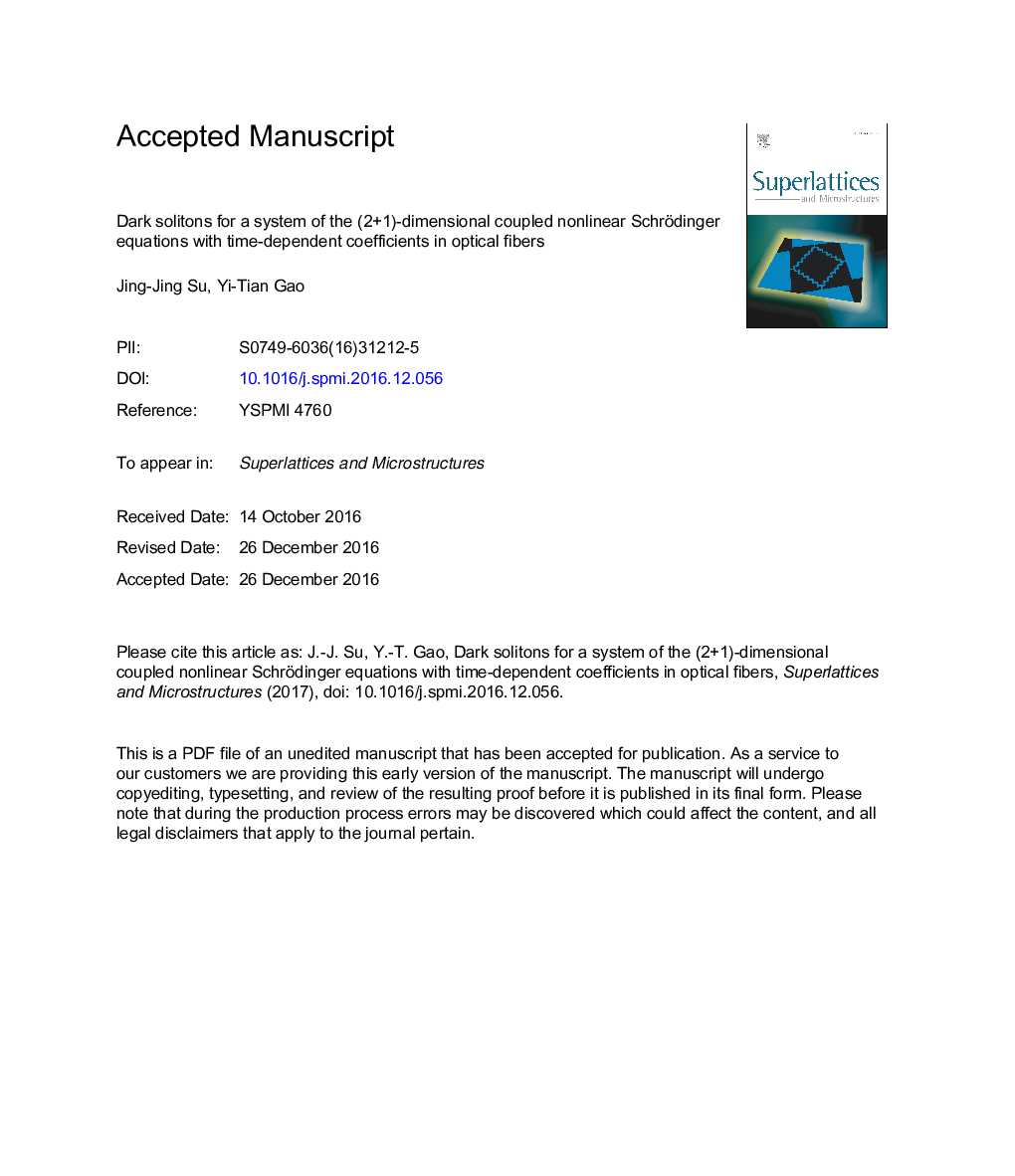| Article ID | Journal | Published Year | Pages | File Type |
|---|---|---|---|---|
| 7940880 | Superlattices and Microstructures | 2017 | 17 Pages |
Abstract
In this paper, under investigation is a (2 + 1)-dimensional coupled nonlinear Schrödinger system with time-dependent coefficients, which could describe the attosecond pulses in an optical fiber. Bilinear forms and dark soliton solutions are derived via the Hirota method. Effects of the perturbation function α(t) on the dynamics of the solitons, i.e., intensities, velocities and accelerations, are analyzed. With the choice of different perturbation functions, we obtain the linear, parabolic and quasi-periodical dark solitons. α(t) is also described as an energy input function to make the optical solitons continue to propagate with the initial velocity when a perturbation happens. To reduce the energy loss, the so-called “optimal” energy input function is introduced to minimize the input energy, and we illustrate the elastic interaction between the two solitons graphically.
Related Topics
Physical Sciences and Engineering
Materials Science
Electronic, Optical and Magnetic Materials
Authors
Jing-Jing Su, Yi-Tian Gao,
